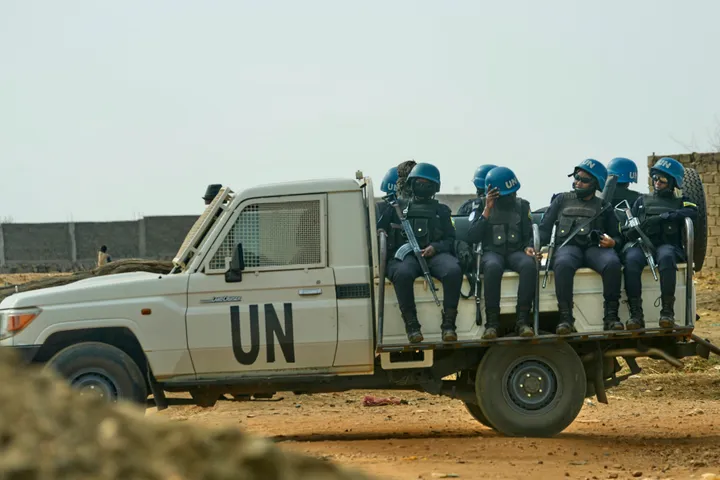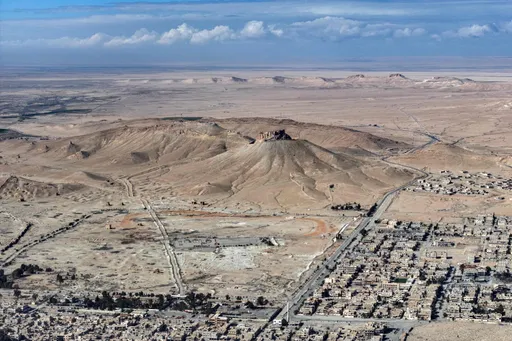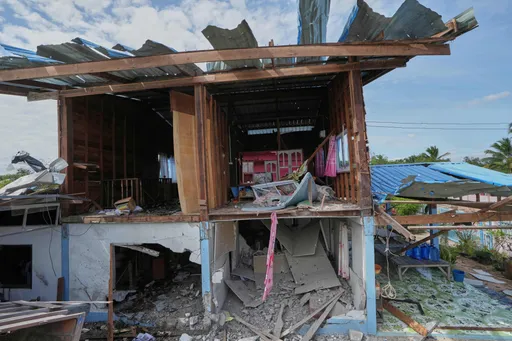US President Donald Trump’s wishful plan to settle the long-simmering Israeli-Palestinian conflict has almost no chance of working. That's simply because the Palestinians have nothing to gain from it.
None of the pressing issues including the return of towns and villages occupied by Israel, the right of return for Palestinian refugees, or the removal of illegal Jewish settlements has been addressed in the so-called Deal of the Century, unveiled on Tuesday.
The map of the proposed Palestinian state looks like the cracked surface of poorly-baked cake crumbling apart. It’s like an archipelago on land with Israeli roads cutting through it in more than a dozen places.
“The idea that this would be a sovereign Palestinian state is pretty weak,” Ryan Bohl, a Middle East expert at think tank Stratfor, told TRT World. "Much of its sovereignty - as we understand it for another country - won’t be there.”
If by any chance the plan does go through, the Palestinians “won't have a defence policy, their foreign policy would be easily influenced, and their economic relations would be dependent on Israel,” he said.
Trump’s proposal, which comes at a time when he’s facing impeachment proceedings within his own country, sharply deviates from previous attempts to settle the territorial and diplomatic disputes. Here's a quick look at some of them.
The UN Plan of 1947
In November 1947, the UN General Assembly adopted a resolution dividing the Palestinian territory between the Arab and Jewish people.
More than 56 percent of the land went to the Jewish people who at the time numbered 498,000. The Arab population of more than 800,000 people was given a landmass of 43 percent. Jerusalem was supposed to be an internationalised city.
Palestinians rejected the proposal as they said the rights of the majority weren’t being protected. The Jewish Agency, a representative body of the Jews, wasn’t too happy with the contours of the plan but nevertheless cheered on the creation of an Israeli state.
By the time Israel was established in May 1948, it was already in control of some of the territory reserved for Palestine. In subsequent years, the Arab states in the region fought wars with Israel, which allowed the Israelis to occupy more territory. Israel pushed out Palestinians from their villages to make way for Jewish settlers.
The UN Security Council Resolution 242
Israel captured the West Bank, East Jerusalem, the Gaza Strip, Egypt’s Sinai Peninsula and the Golan Heights from Syria in the 1967 Middle East war.
The UN Security Council Resolution 242 on November 22, 1967, called for “withdrawal of Israeli armed forces from territories occupied in the recent conflict". In return, the Arab states in the region were asked to mend ties with Israel.
But the resolution was never implemented, and world leaders just paid lip service to its enforcement. Israel continues to occupy all that territory except for the Sinai Peninsula.
Trump’s plan recognises almost all the occupied land in the West Bank as part of the Israeli state. Half a million Israeli settlers live in at least 100 illegal settlements that would be annexed by Israel under Trump's plan.
The Oslo Accords
In the 1990s, the Palestinian Liberation Organisation (PLO) led by its charismatic leader Yasser Arafat held a series of negotiations with the Israelis to find a peaceful resolution.
The talks followed the First Intifada of the 1980s when ordinary Palestinians mobilised in a non-violent movement against the Israeli occupation and drew the world’s attention to the inhumane conditions of occupation.
The Oslo I Accord was signed in 1993, and the Oslo II Accord, in 1995.
Those agreements didn’t end in a permanent solution as critical issues like illegal Israeli settlements, the question of the return of refugees and the status of Jerusalem were never settled.
Palestinians continued to live under tight Israeli security with their movement restricted and monitored.
Yitzhak Rabin, then Israeli prime minister, who led his side in the talks with Arafat, was assassinated in 1995 by a Jewish extremist who thought too much was given to the Arabs.
But that’s not the case at all.
The Accords did transfer control of major Palestinians cities and towns in the West Bank and Gaza Strip to the Palestinian Authority, but Tel Aviv continued to exert control of security and sent in soldiers whenever it felt the need.
Jewish extremists regard the land as a biblical right and opposed negotiations with Yasser Arafat and feared they would be evicted from illegal settlements.
Israel has withdrawn soldiers from the Gaza Strip but keeps it under a tight air, land and sea blockade, making the everyday lives of the caged residents miserable.
Trump’s plan has left the fate of Palestinian refugees, who have been driven out of their homes by Israeli aggression, in limbo.
More than a million Palestinian refugees, many of them living in Jordan and Lebanon, will have no right to return to their homes if the deal goes through.
“(The plan) is a big change from the previous peace plans because it’s leaning heavily on the American and Israeli unilateralism. And it’s not getting a whole lot of buy-in from the region or the Palestinians,” says Bohl.
“In many ways, this peace plan is just recognising the facts which are already on the ground, it is taking things that were de facto and making them de jure.”
























